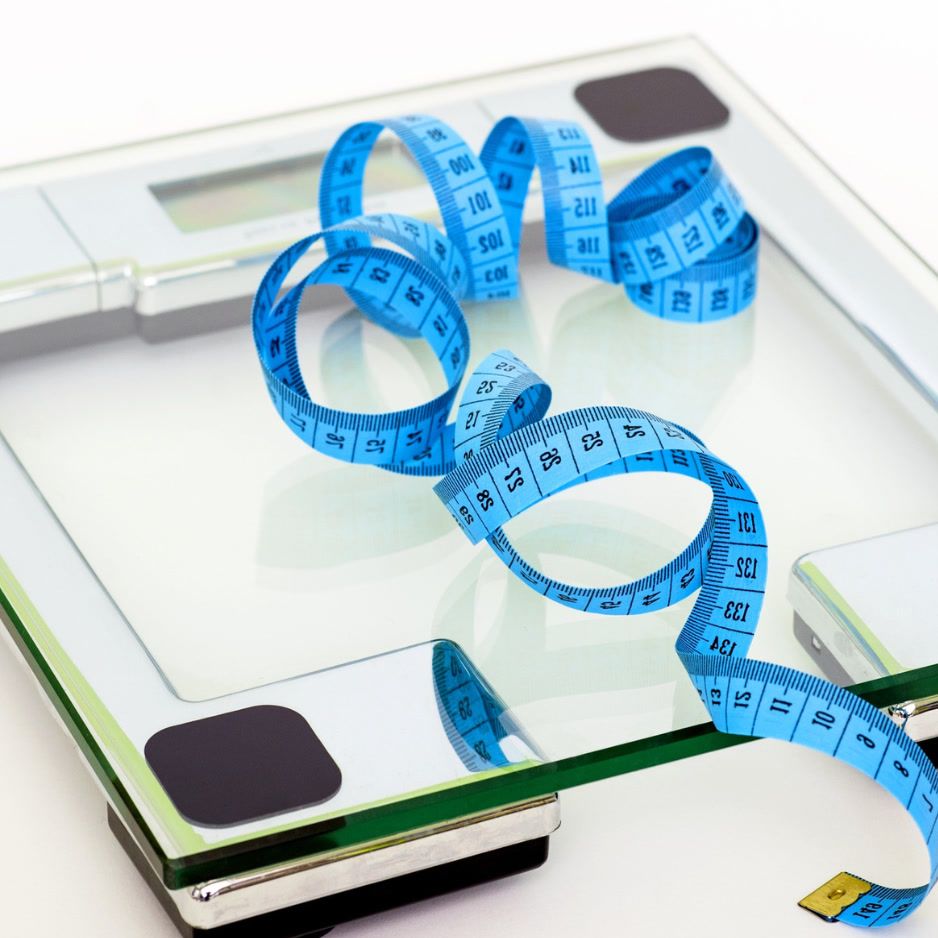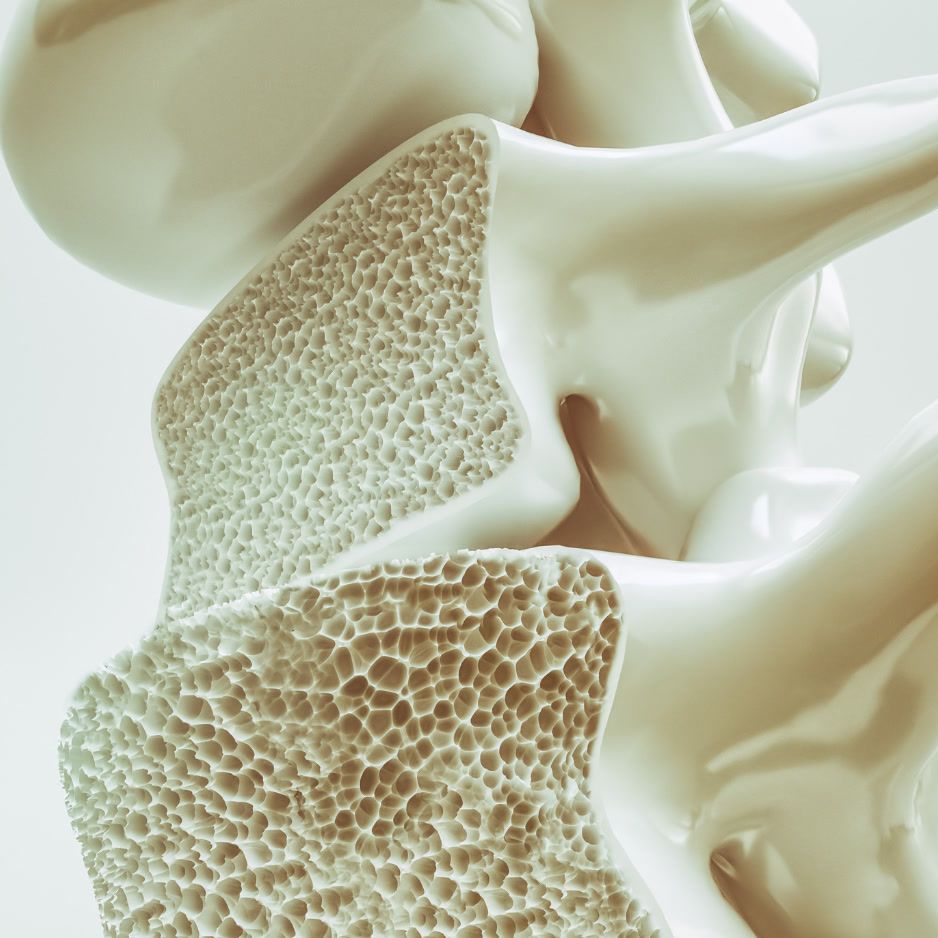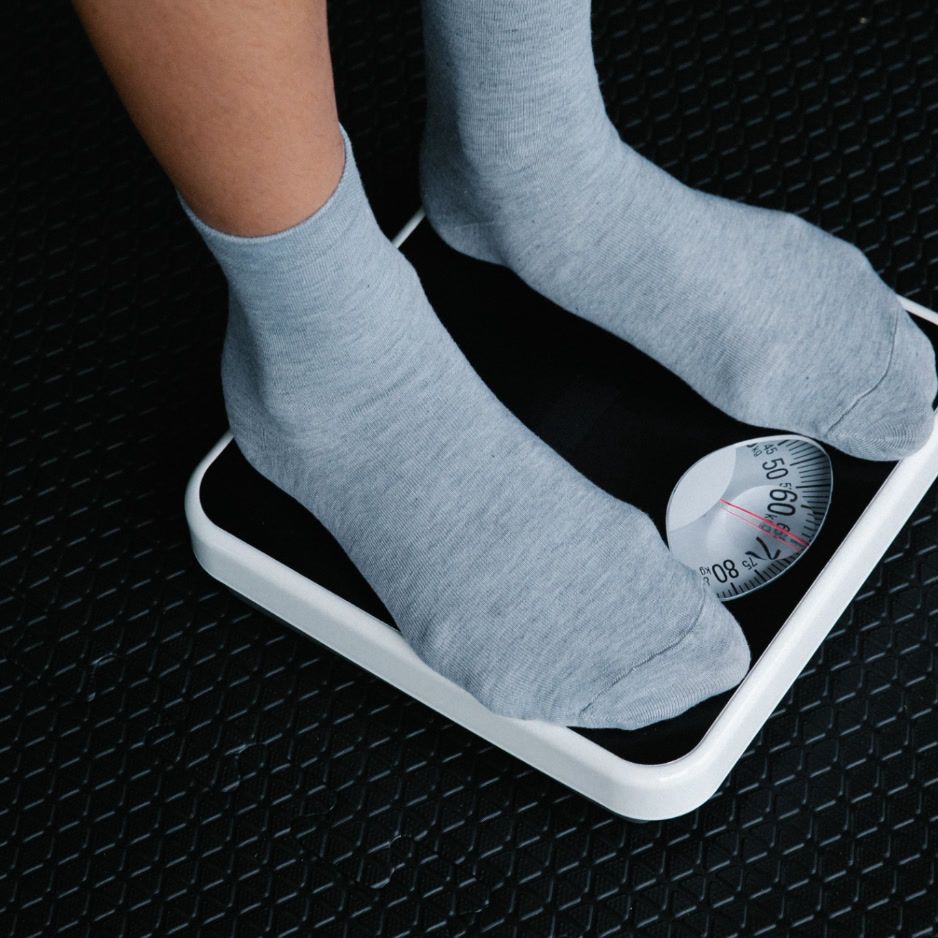Does Muscle Weigh More Than Fat?

Does Muscle Weigh More Than Fat?
Density of muscle ≈ 1.06 g/mL • Density of fat ≈ 0.90 g/mL (Cleveland Clinic)
Muscle and fat may weigh the same on a scale, but they don’t look—or act—the same inside your body. Once you understand that, the bathroom scale is no longer the final word. In this guide we’ll bust the “muscle weighs more than fat” myth, unpack what really happens when you gain muscle or lose fat, and show you the smartest ways to track progress—highlighting why DEXA scans deliver the most comprehensive insights.
Table of Contents
- Myth-Busting: Why the Scale Lies
- Muscle vs. Fat Density: Side-by-Side Comparisons
- Scale Weight vs. Body Composition
- Measuring What Counts: DEXA vs. Other Methods
- Action Plans for Every Goal (Novice • Midlife • Trainer)
- Frequently Asked Questions
- Key Takeaways & Next Steps
Myth-Busting: Why the Scale Lies
“Does Muscle Weigh More Than Fat?” — Where the Saying Goes Wrong
- A pound of muscle and a pound of fat weigh the same. The crucial difference is their density; muscle is more compact, taking up less space than an equal weight of fat. Gaining muscle while losing fat can make you smaller even if scale weight doesn’t budge.
- Water shifts, glycogen storage, and even the contents of your last meal can swing scale readings by up to 5–6 lb in a single day (Healthline)—none of which reflect true fat change.
Density Differences: Muscle vs. Fat by Volume
Skeletal muscle is roughly 18 percent denser than adipose tissue. In other words, a given volume of muscle weighs about one-fifth more than the same volume of fat. Picture two one-liter tubs—one filled with pure muscle, the other with pure fat. The muscle tub would weigh ~1.06 kg, while the fat tub would weigh ~0.90 kg.
Density 101
A handy analogy: Imagine stuffing your carry-on. Muscle is like tightly rolled clothes; fat is like bulky sweaters. Same weight, but the rolled-up clothes leave more room in the bag (your body).

| Tissue | Density (g/mL) | Volume of 5 lb | Visual Analogy |
|---|---|---|---|
| Skeletal Muscle | ≈ 1.06 | 2.15 L | Just over two 1-liter bottles |
| Adipose (Fat) | ≈ 0.90 | 2.52 L | About two-and-a-half 1-liter bottles |
Sources: Density values from Cleveland Clinic. Volumes calculated by BodySpec (Volume = Weight ÷ Density).
Muscle vs. Fat Density: What It Looks Like in Real Life
Visual models often depict fat as large, yellowish blobs and muscle as smaller, red-fibrous chunks. The takeaway: 5 lb of muscle is roughly the size of a grapefruit; 5 lb of fat is closer to a small loaf of bread.

That difference shows up in the mirror:
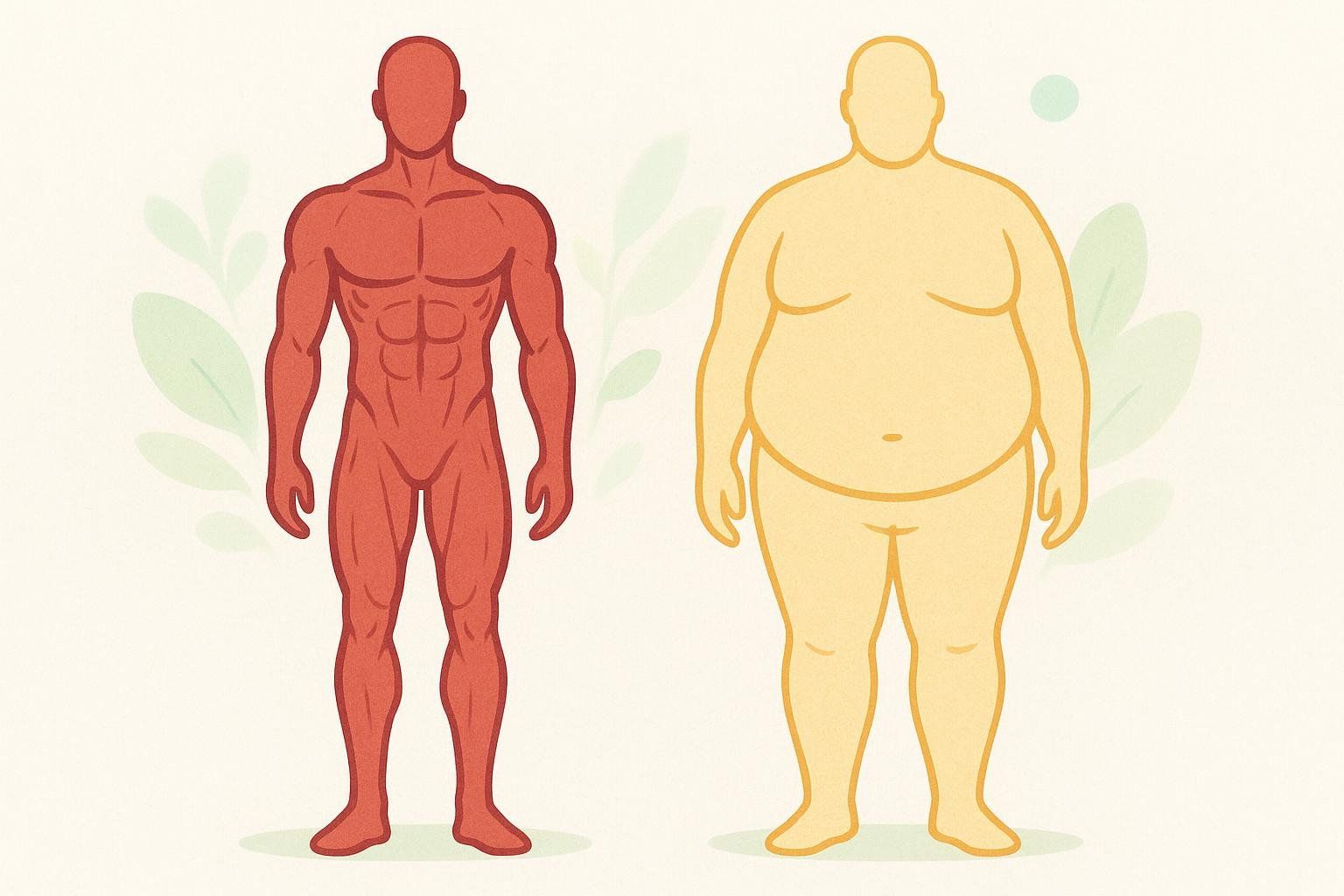
- A 160-lb lifter at 18 % body fat wears a smaller jean size than a 160-lb sedentary desk worker at 28 % fat.
- In DEXA scan reports, muscle gain often shows up as volume reduction even when scale weight rises.
Beyond appearance, these tissues serve very different physiological roles. Muscle drives movement, stabilizes joints, stores glycogen, and acts as a metabolic engine that helps regulate blood-sugar levels. Fat cushions organs, insulates the body, stores energy, and produces hormones such as leptin and estrogen. Striking a healthy balance between the two is therefore a matter of overall health—not just aesthetics.
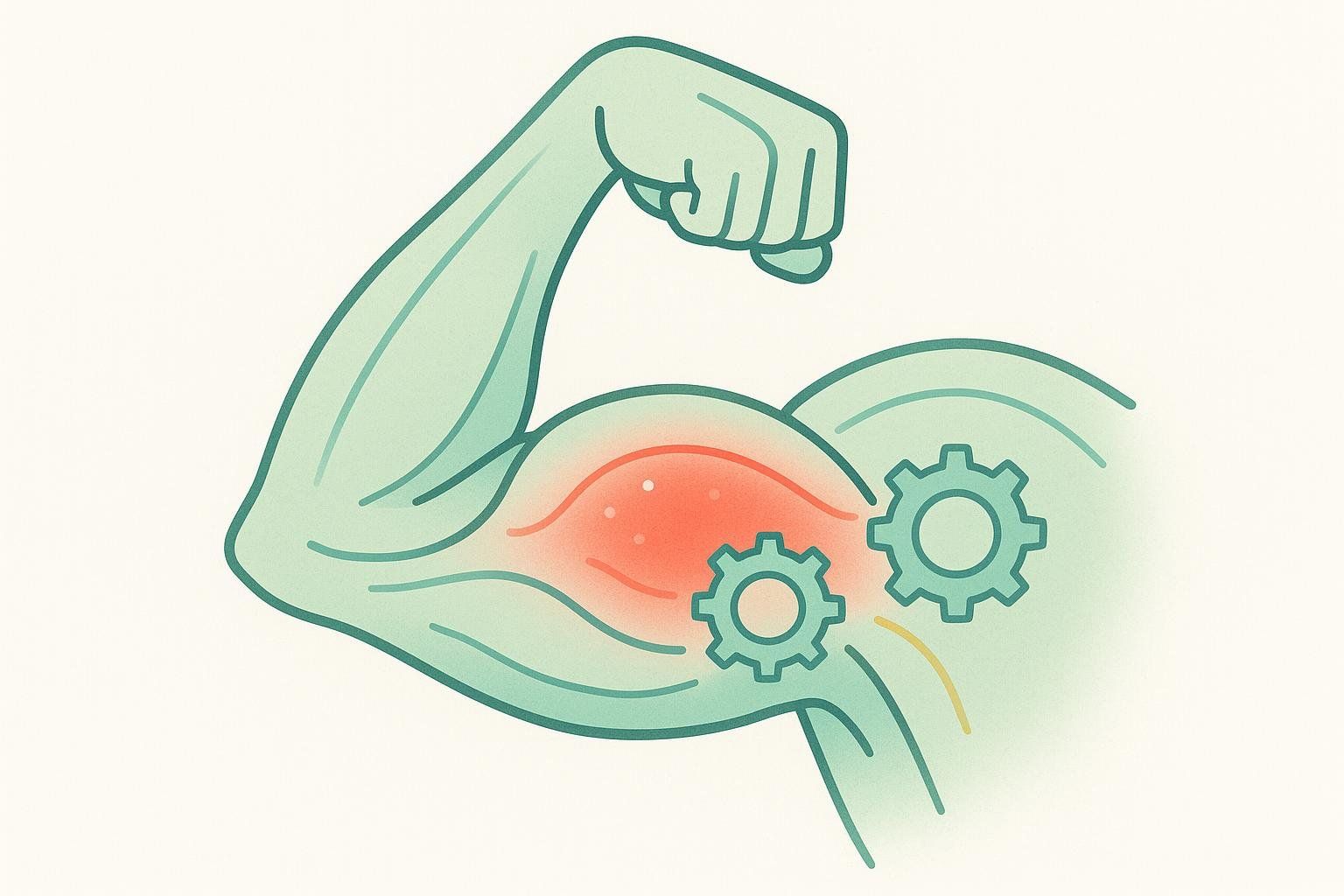
Scale Weight vs. Body Composition
Relying on the scale alone can backfire:
- False negatives: You’ve lost 3 lb of fat but gained 3 lb of muscle—scale says 0 lb lost, yet you’re healthier and leaner.
- False positives: Crash dieting can drop 10 lb fast, but up to 30 % of that can be muscle tissue (Healthline). Losing muscle slows metabolism and makes future fat-loss harder.
Body-composition tracking avoids both traps. DEXA scans break down total mass into fat mass, lean mass, and bone—plus a visceral-fat score that pinpoints the dangerous fat around your organs—giving you actionable data instead of guesswork.
Healthy Body-Fat Percentage Ranges
How low—or high—should you aim? Healthy ranges shift with age and sex. The chart below presents healthy ranges based on data summarized by Medical News Today (source), which compiles figures from peer-reviewed studies.

| Age (years) | Men – Healthy % | Women – Healthy % |
|---|---|---|
| 20–29 | 10.6 – 18.6 | 16.6 – 22.7 |
| 30–39 | 14.6 – 21.3 | 17.5 – 24.6 |
| 40–49 | 17.5 – 23.4 | 19.9 – 27.6 |
| 50–59 | 19.2 – 24.6 | 22.6 – 30.4 |
| 60–69 | 19.8 – 25.2 | 23.3 – 31.3 |
Values combine the “good” and “fair” categories that researchers associate with favorable cardiometabolic profiles. Athletes often sit below these bands, while readings above them carry higher health risk.
Measuring What Counts: DEXA vs. Other Methods
| Method | Accuracy | What You Learn | Cost | Ideal For |
|---|---|---|---|---|
| DEXA Scan | ± 1 % body fat | Fat, lean, bone, visceral fat | $40–$150 per scan | Anyone serious about precision |
| Bioelectrical Impedance (Smart Scales) | ± 5–8 % | Fat vs. lean estimate | $25–$150 (device) | Daily trend checks |
| Skinfold Calipers | ± 3–5 % (with pro) | Subcutaneous fat only | $25–$50 per session | Coaches on a budget |
| BMI & Bathroom Scale | N/A | Weight only | BMI: Free • Scale: $20–$60 | Quick self-checks |
Accuracy sources: BodySpec DEXA vs. other tests • Review of body composition assessment methods (Shepherd et al., 2017)
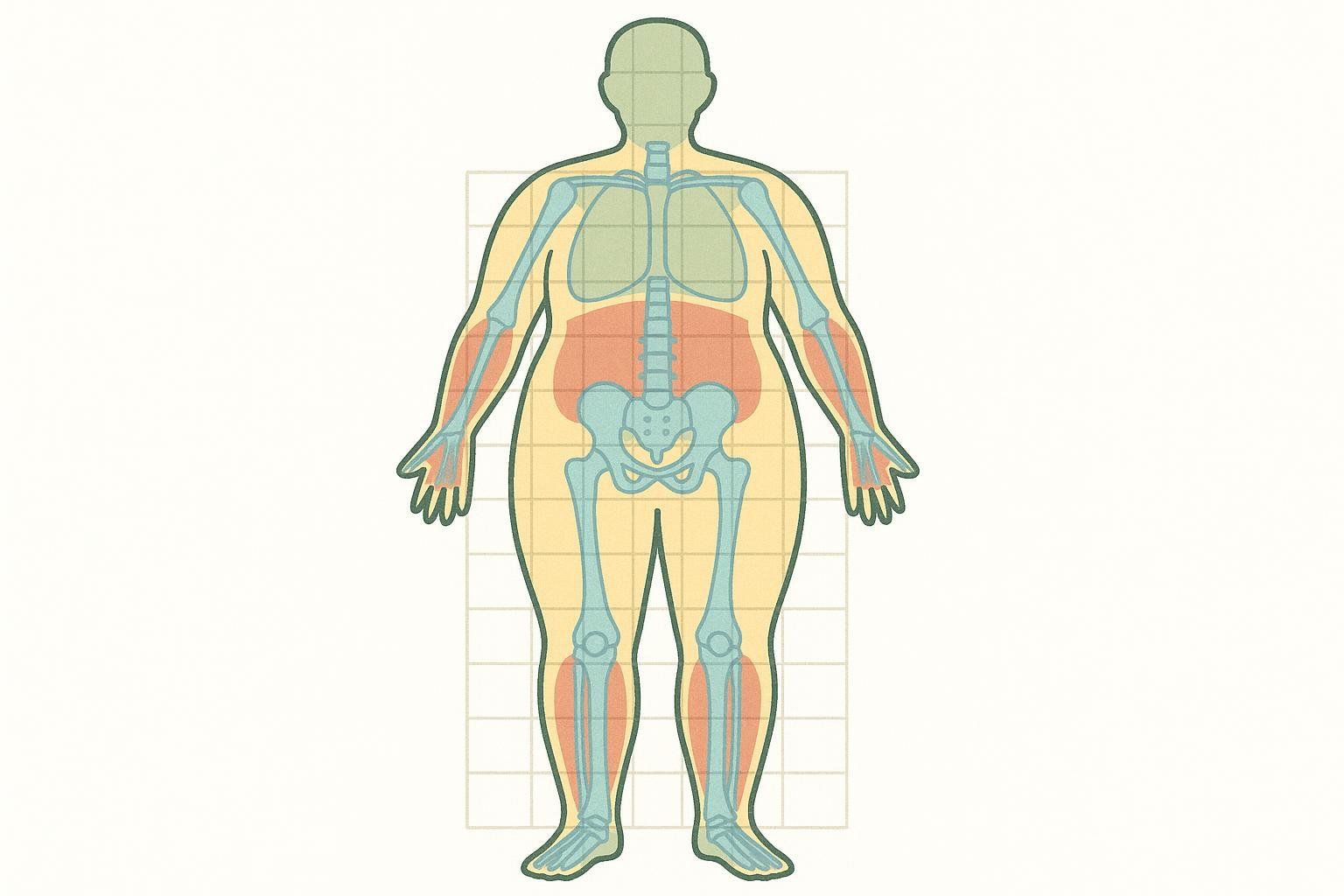
Want the gold standard? Book a BodySpec DEXA » and get a 10-minute snapshot of your exact muscle, fat, and bone breakdown—storefronts and mobile clinics available in NorCal, SoCal, Austin, Dallas, and Seattle.
Action Plans for Every Goal
Fitness Novice: Getting Started
- Lift 2× per week: Full-body workouts (squats, rows, presses).
- Walk 8–10 k steps daily: Low-stress calorie burn.
- Protein target: 0.7–1 g per pound of goal weight.
- DEXA every 3 months: Celebrate muscle gained even if weight stalls.
Midlife Health Focus (40–55)

- Prioritize resistance training: Safeguards against age-related muscle loss (sarcopenia).
- Monitor visceral fat: DEXA’s android-gynoid report pinpoints belly fat tied to metabolic risk.
- Include mobility & recovery: Yoga or Pilates 1× per week keeps joints happy.
For Fitness Professionals
- Use the density table above in client consults.
- Encourage “body recomposition” targets (e.g., –3 % fat • +2 lb muscle per quarter).
- Pull up a client’s serial DEXA scans to visually show lean gains.
Frequently Asked Questions
Can I Weigh More Because of Muscle?
Absolutely. If you’ve added muscle tissue without losing an equal weight of fat, the scale will go up—even though your measurements may shrink. That’s why strength athletes often weigh more than they look.
Why Do I Look Skinnier but Weigh More?
Volume matters more than weight for aesthetics. Muscle occupies less space, so replacing fat with muscle tightens your physique even if total pounds stay the same—or rise slightly. Clothes fit better, waistlines shrink, and posture improves.
Do You Gain Weight When You Gain Muscle?
Yes. Gaining muscle means you’re adding new, dense tissue. If the muscle you build outweighs any fat you lose, your scale number will rise. Newly formed muscle also holds extra water and glycogen, which can nudge weight upward even further. Over weeks or months of progressive training, it’s normal for scale weight to climb while body-fat percentage falls.
Does Muscle Burn Calories at Rest?
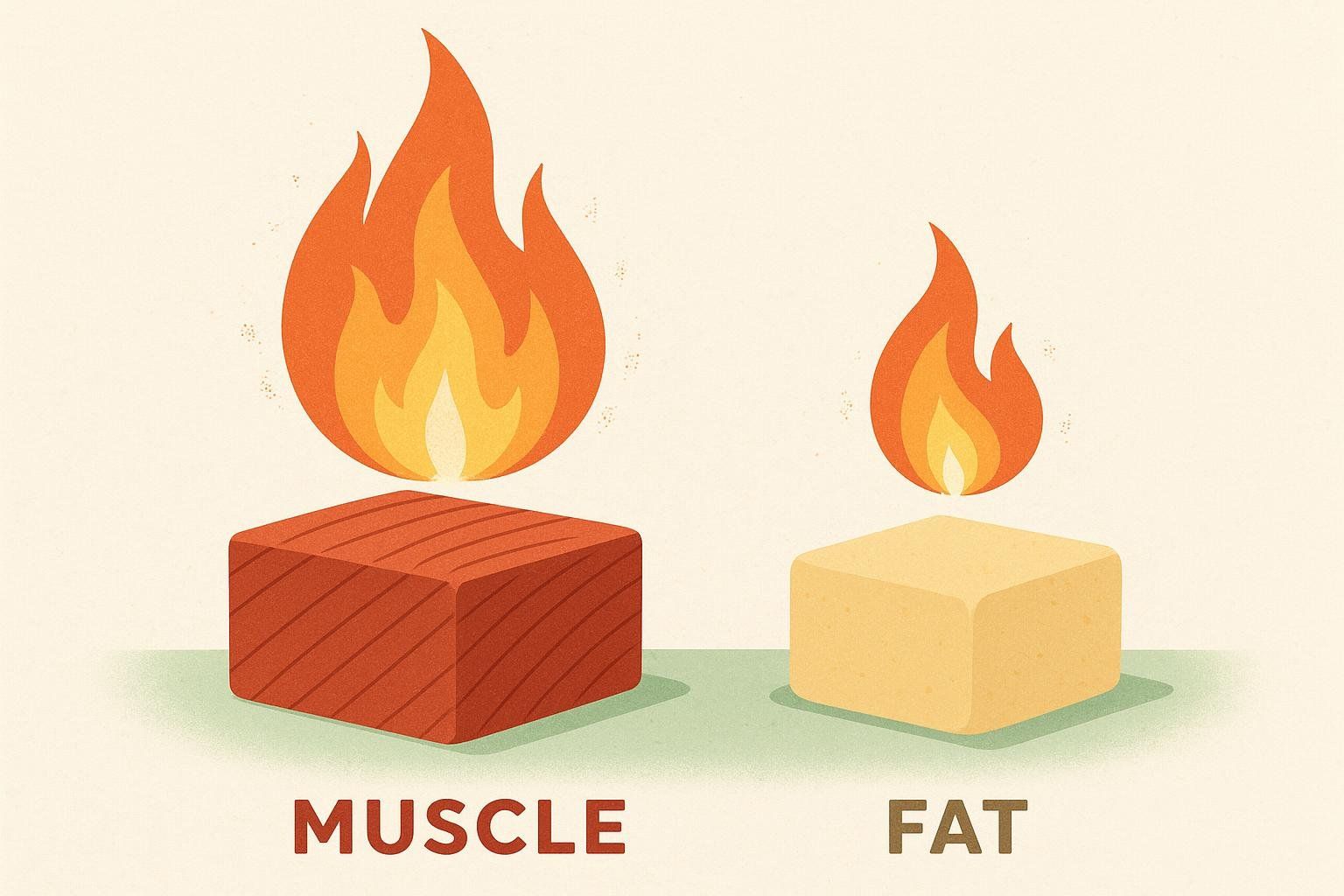
Yes—about 6 kcal per pound per day versus roughly 2 kcal for fat, based on tissue-specific metabolic rates of 13 kcal/kg for skeletal muscle and 4.5 kcal/kg for adipose tissue (Wang et al., 2010). Not a miracle, but every bit helps.
What’s a Healthy Body-Fat Percentage?
See the age- and sex-specific table above for ranges linked to favorable health outcomes. Athletes often sit below these bands.
Can I Spot-Reduce Fat?
No. Fat loss is systemic. Strength training + calorie control + sleep works everywhere.
Key Takeaways & Next Steps
- Muscle doesn’t weigh more than fat—it’s simply denser, so it occupies less space.
- Focusing on body composition beats obsessing over scale weight.
- DEXA scans are the most precise, affordable way to measure fat, muscle, and bone.
Ready to see what you’re really made of? Book a BodySpec scan today » and turn your scale frustration into data-driven confidence.
